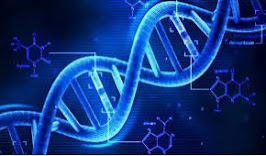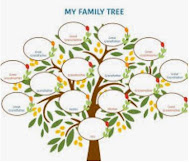(a posting by Mark Todd)
That my heritage includes ancestors who owned slaves should not have come as any surprise to me: I descend from multiple ancestral lines in Colonial Virginia, the Colonial Carolinas, and the Antebellum South.
But the documented evidence took me aback--in fact, so much so I had to step away from genealogy for a while to process this information. (And it's made me think about appropriate ways to respond to the actions of my ancestors--see some of these avenues in the next post.)
So far, I've identified thirty-three slave-owning great-great grandparents who, in the aggregate, owned some 200 human beings (actually, 190 I could enumerate from available records, but with verbiage that sometimes made clear there were more).
In context, I actually have a total of 1,016 great-great grandparents in the Colonial American generations I've been researching between 1700 and 1860, so slave-owners only account for 3.24 percent of my ancestors in this pool, which means almost 97 percent were not slave owners. But that mathematical consolation somehow rings hollow.
In this blog, I'm going to tell the stories of two ancestral families who were part of multi-generational slave-owners. (In the next blog, I'm going to enumerate all the names, dates, and locations of the owners and their known slaves.)
The Family of Josiah Todd and his wife Zilpha Thomas
If you've read my genealogy blogs before, you've already met Josiah Todd (1778-1853), my paternal great-great grandfather. He was born in Bertie County, North Carolina during the Revolutionary War, and died in Lowndes County (formerly Dallas County), Alabama. Josiah's father William was a slave owner in North Carolina, as were several of Josiah's children, including my great grandfather Hardy Todd. During the War of 1812, Josiah served as an ensign under Capt. John O'Hara with Youngblood's Regiment of the South Carolina Militia. He was a founding member of Bethany Baptist Church and even donated the land where the church stands. He owned considerable landholdings totaling more than 1,000 acres, and raised fifteen children with two wives. The second was my second great-great grandmother, Zilpha Thomas (1794-1871).
The 1850 Slave Schedule for Josiah records he owned 11 slaves, and his 1853 will specifically bequeaths to Zilpha "three negro slaves, namely, Annie a girl aged 23 years, Robin a negro man aged about 27 years, and Bill a negro man aged about 27 years." But then he states, "[T]he rest of my slaves shall be divided among [my ten living] children," which increases the total tally to at least 13 slaves.
After Josiah's death, the 1853 census records show Zilpha actually retained six slaves. The 1860 slave schedule shows her still with six slaves, her son Atha with six slaves, and her son Hardy with one slave (accounting for all 13 enslaved people bequeathed in Josiah's will).
The following year would see the beginning of the American Civil War and four years later the end of slavery.
The Families of William Kees Hardin and his father-in-law William McCandless
My maternal grandmother was always dismayed her father-in-law Watt Hardin Sr was the child of slave owners, but I don't think she realized he also represented the sixth generation of slaveholders on that line. And his father William Kees Hardin (1808-1889), my great-great grandfather, had the largest holdings within all six generations. In addition to hands-on oversight and work on his plantation, William was active in community affairs his entire life, having served at different times as a deputy sheriff, a U.S. postmaster and, throughout the Civil War, a justice of the peace. A newspaper article published at the time of his death states, "He was an energetic, painstaking man, a good farmer, a kind husband, and a loving father." By the time of the Civil War, he had also owned some 45 to 50 enslaved people.
Early Tax lists for Hardin County, Tennessee for both 1836 and 1837 report he owned a black male worth $650 at that time. By the 1840 census, he owned five slaves. And an 1850 Slave Schedule records he then owned fifteen slaves: eight males, respectively aged 70, 35, 11, 9, two at age 8 (of which one was Mulatto), 2, and 1; and seven females, aged 51, 24, 16, two at age 6, and two at age 4."
The 1860 Slave Schedule for Hardin County records that W. K. Hardin had increased his slaveholdings to thirty, of which eleven were Mulatto (M): fourteen males, aged 50, 19 (M), 19, 18 (M), 12, 12 (M), 11, 9, 8, 5 (M), 5, two aged 4, and 3; and sixteen females, aged 40 (M), 35, 30, 17, two aged 17 (M), 14, 14 (M), 9 (M), 8, 8 (M), two aged 6, 6 (M), 4, and 2. Mulatto refers to an individual who is half-white and half-black; the disproportionate increase in Mulattoes from 1850 to 1860 suggests W.K. Hardin was involved in the disturbing practice known as "growing slaves," to use a term supplied by historian Henry Louis Gates Jr.
William K. had married Sarah McCandless on 10 Dec 1838, daughter to another slave owner in Hardin County named William McCandless (1788-1851), my second great-great grandfather. The 1830 U.S. Federal Census records William as head of household in Maury County, Tennessee , including Sally (implied as the one Free White Persons - Females - 30 thru 39) in a household including eleven “Free White Persons” as well as nine slaves, consisting of two “Slaves - Males - Under 10,” three “Slaves - Males - 10 thru 23,” three “Slaves - Females - Under 10,” and one “Slave - Femals - 24 thru 35.”
The 1840 U.S. Federal Census records William as head of household in Hardin County, Tennessee, and his wife Sally (implied as the one “Free White Persons - Females - 40 thru 49). The household contains seven “Free White Persons,” but also records 14 slaves, including five males: two under age 10 and three between ages 10 and 14; and nine females: seven under age 10, one aged 10 to 24, and one aged 35 to 55.
The 1850 Slave Schedule for District 1, Hardin County, Tennessee, records "Wm McCandless" as owning seven slaves: three males ages 9, 10, and 17; and four females, ages 9, 13 (a Mulatto), and two that were 14.
And remember my maternal grandmother's dismay for her father-in-law? Watt Hardin Sr (1841-1933) enlisted in the Army of the Confederacy at Hampshire, Maury County, Tennessee, 1 Jul 1861, to defend slavery. According to records at the National Park Service (NPS) Civil War details, Watt was a Third Lieutenant with J.B. Biffle's 19th Regiment, Tennessee Cavalry. The NPS details corroborate family accounts that Watt took his horse to war but leaves out that he was also accompanied by his "whipping boy" (a slave companion of the same age that he'd had since a young child) to saddle, groom, and care for the mount. (I think I recall grandmother saying this slave's name was "Robert," but I'm not certain.)
Watt served in the battles of Shiloh, Munford, Perryville, Stones River, Chickamauga, Brice CrossRoads, Harrisburg, Paducah, Franklin, Nashville, and others before his regiment surrendered on 3 May 1865 alongside the Department of Alabama, Mississippi, and East Louisiana as part of T.H. Bell's command. After his release from internment after the Civil War, he returned to his home county and a year later in 1866 married my great-great grandmother Alberta "Allie" Gertrude Hall.
I hope Watt's former whipping boy Robert survived as well and got his freedom, but no records I can find tell that story's ending.
The next post provides research notes for all thirty-three of my slave-owning ancestors as well as names (if known), locations, and ages for all 190 slaves in my research--all this in the hope that some African-American family genealogists might find useful clues in searching for their own ancestors.
I also list resources and Websites where any readers who also have slave-owning ancestors can share their information to help African-American family genealogists find their roots.
* * *
 Mark and Kym Todd are volunteers on WikiTree, a project to create the entire human tree. Profiles, sources, and documents for key individuals described above are on WikiTree:
Mark and Kym Todd are volunteers on WikiTree, a project to create the entire human tree. Profiles, sources, and documents for key individuals described above are on WikiTree:
 Mark and Kym Todd are volunteers on WikiTree, a project to create the entire human tree. Profiles, sources, and documents for key individuals described above are on WikiTree:
Mark and Kym Todd are volunteers on WikiTree, a project to create the entire human tree. Profiles, sources, and documents for key individuals described above are on WikiTree:




























